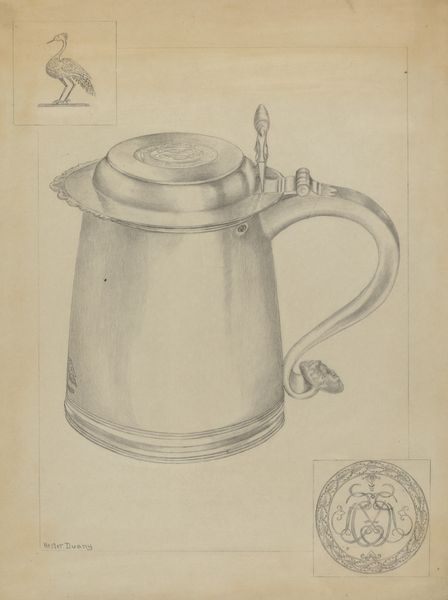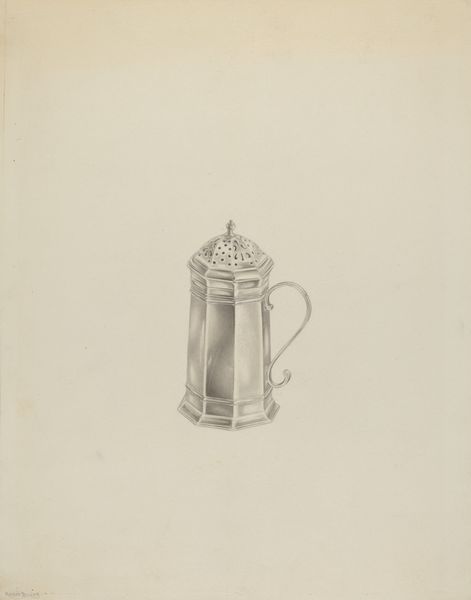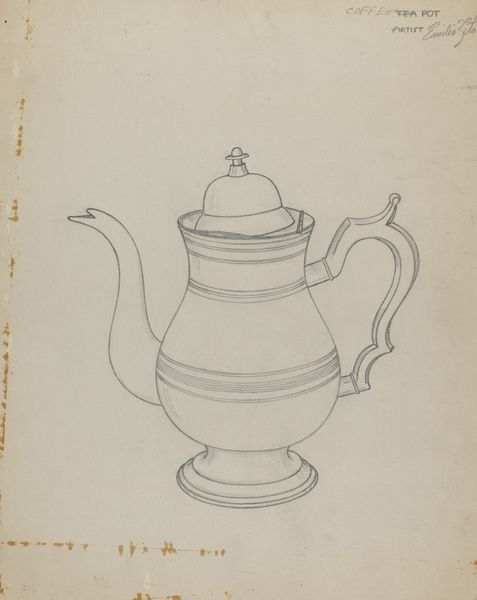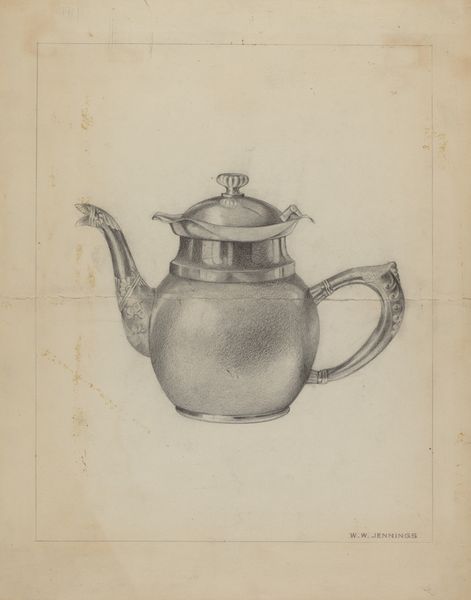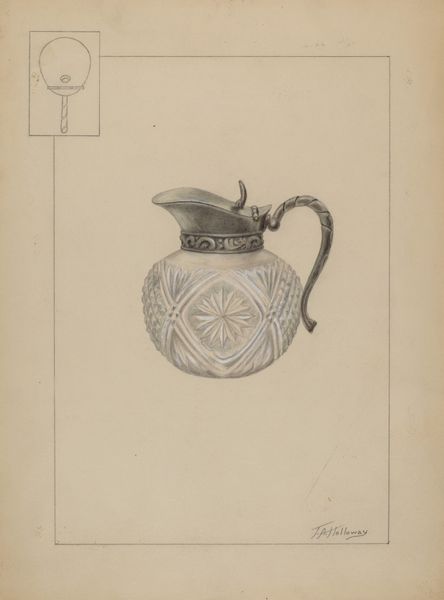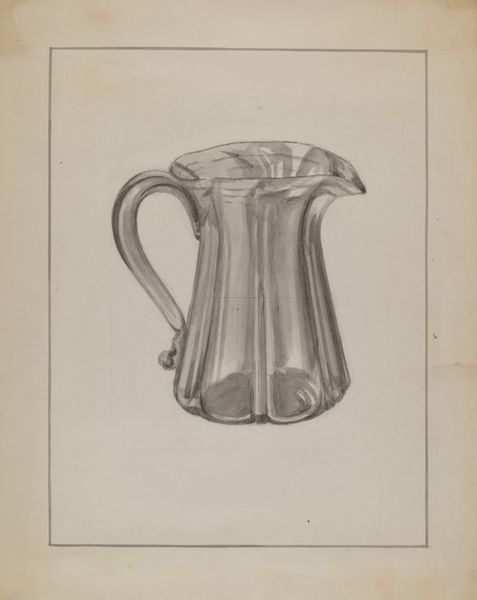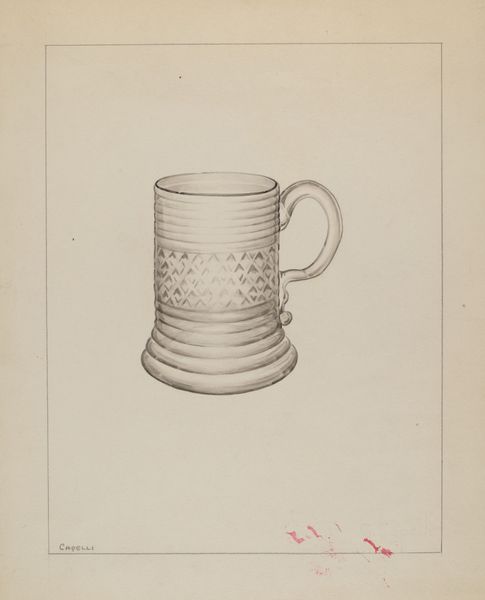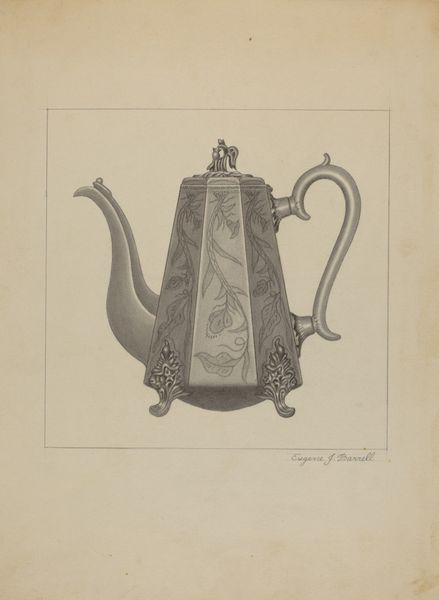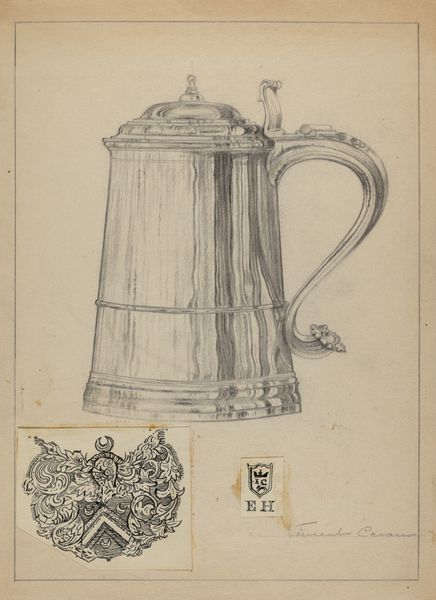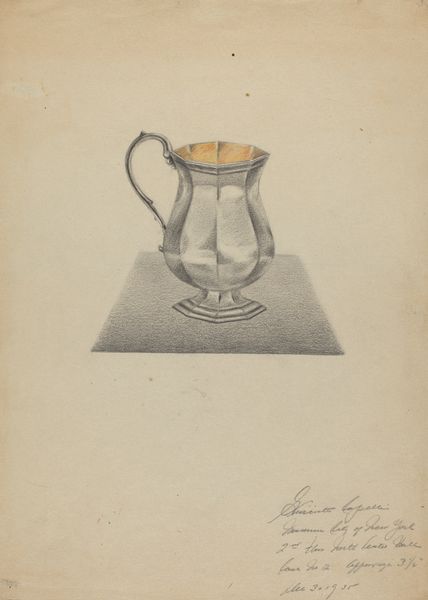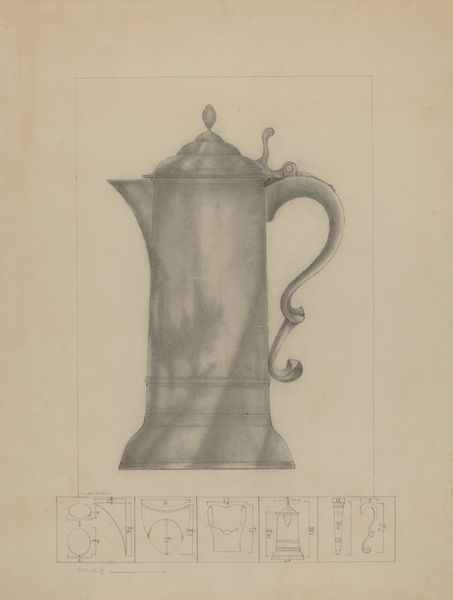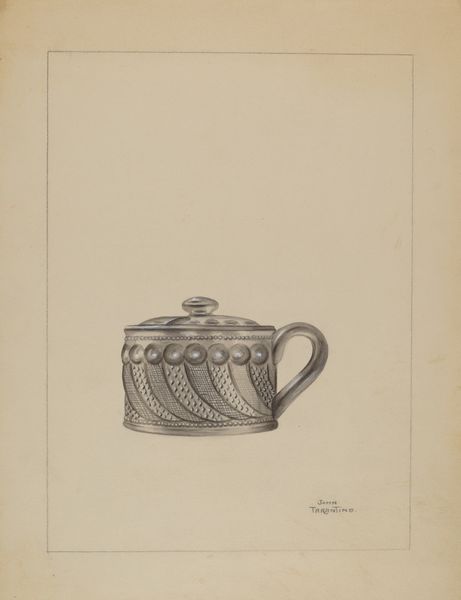
drawing, paper, pencil
#
drawing
#
paper
#
geometric
#
pencil
Dimensions: overall: 28.6 x 23.4 cm (11 1/4 x 9 3/16 in.)
Copyright: National Gallery of Art: CC0 1.0
Editor: Here we have a pencil drawing titled "Lamp," created sometime between 1935 and 1942 by an anonymous artist. I'm immediately drawn to the geometric forms, even the decorative elements are very structured. How do you approach this work from an art expert's point of view? Curator: Well, initially, I focus on the artist’s handling of line and value. Notice how the precise rendering defines the form, lending a sense of volume despite the limited tonal range. The composition itself relies heavily on symmetry and geometric patterns, offering a rigorous structure. Consider the interplay of lines—do they suggest movement or stasis? Editor: I see your point. The symmetry gives it stability, but the slight irregularities in the drawing make it feel hand-made and somewhat dynamic. What about the patterns on the lamp? Are those purely decorative, or do they have any other role? Curator: I interpret them as primarily decorative. They break the larger geometric shape into more digestible segments that are echoed through the piece. I’d argue that the overall aesthetic emphasizes formal clarity over representational accuracy or emotional expressiveness, placing it within the trajectory of geometric abstraction. Does the medium—a humble pencil drawing—alter how you see the finished piece? Editor: Definitely. If it were a painting, it might carry more weight or feel more imposing. The simplicity of the pencil drawing gives it an accessible, almost understated quality. Curator: Precisely! A crucial detail. What I find remarkable is how the drawing captures both the utilitarian function and a stylized design. Perhaps what the anonymous artist sought was not only function but aesthetic form as well. Editor: This close visual analysis has opened my eyes to so much more detail; I would have looked past such a common object before, and thought less of the simple pencil medium. Curator: I concur. The work, devoid of extraneous detail, directs us back to fundamental principles of form and representation and allows the eye to appreciate each and every one of the artist's strokes and compositional decisions.
Comments
No comments
Be the first to comment and join the conversation on the ultimate creative platform.
